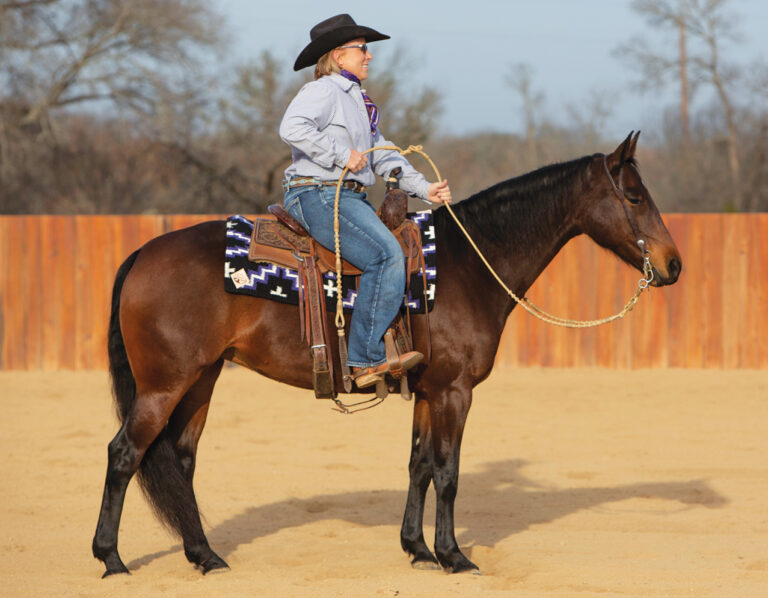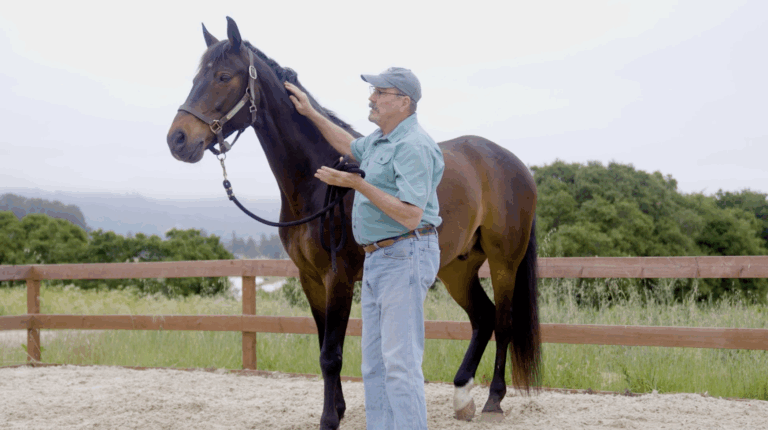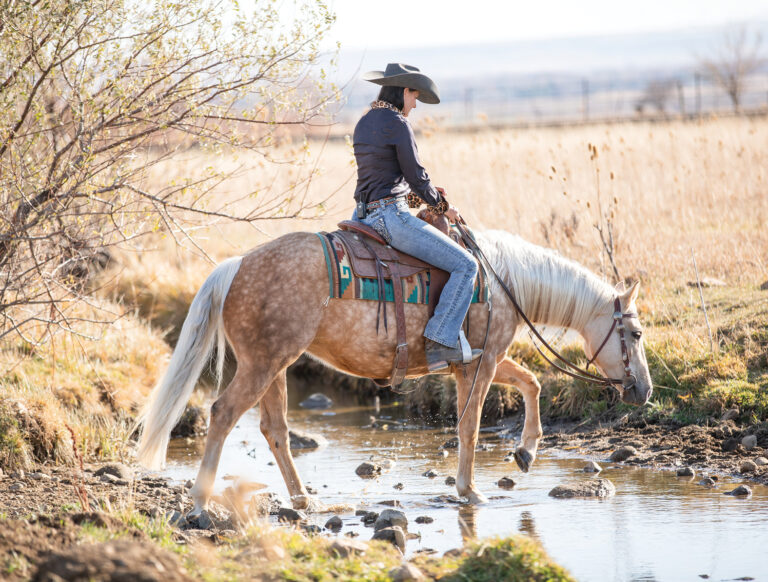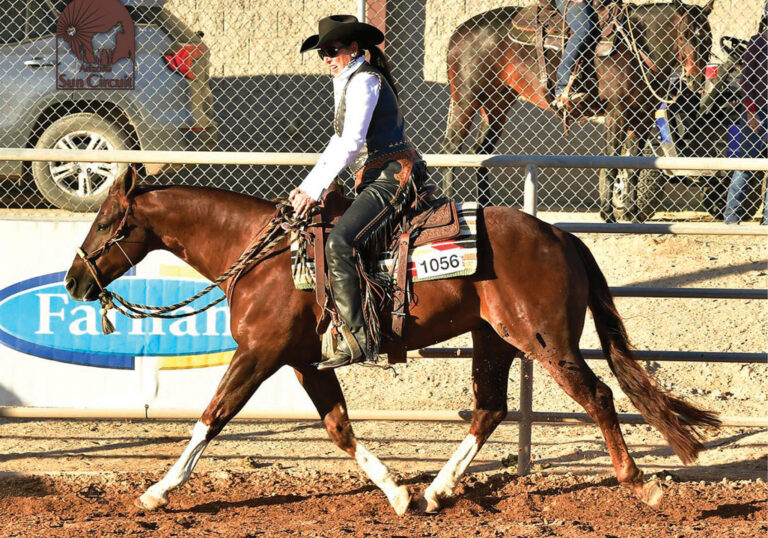The arc and counter-arc play key roles in accurately positioning your horse around every barrel. We have an easy drill you can practice to refine your accuracy.
Here, we’ll outline the drill, plus discuss ways you can work on your rein management and riding position while practicing with or schooling your horse. You don’t need any special equipment to execute this drill; simply outfit your horse in the bit you use to compete. Don’t forget his protective legwear to prevent lower-leg injuries, because your horse will cross his legs over many times in the perfect execution of this movement.
Work on this at the walk first, and then advance to the trot once you refine your and your horse’s skills. Once you’ve mastered it at a walk and a trot, you can add it to your run for more control and, hopefully, you’ll never hit a barrel again!
1. Approach the barrel at a walk, two hands on the reins, using the same angle you would to approach it in a run. Keep your hands and body quiet as you get closer to the barrel, and sit on your pockets. Tip your horse’s nose toward the barrel with your inside hand. The horse’s body position is in what we call a simple arc.
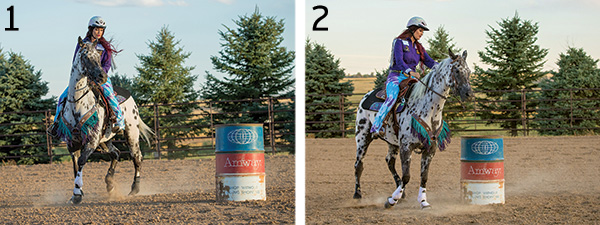
2. Arc an entire circle around the barrel with both hands on the reins. Your horse should cross over in the front end, keeping his hips in line with his shoulders and slightly toward the barrel. Use your legs to hold your horse’s hips in position and to encourage his front feet to cross over. Riding with both hands on the reins gives you the most control; however in a run, we always encourage keeping one hand on the horn once you get up to the barrel. Start this drill with two hands. Once you’ve got the shape and movement you desire with two hands, move to one hand like you would if you were in a run.
3. In a perfect world, you’ll pilot your horse all the way up to the barrel with two hands and then go to the horn when your leg gets to the barrel. However, in some scenarios, you must go to the horn early. Maybe your angle looks good, you feel your horse sitting down early, or you just get nervous and forget the game plan. If you go to the horn too soon and realize your angle coming into the barrel is flat, your horse must respond to one-rein asking him to move his shoulders out. If you don’t have this move in your arsenal, your horse might begin to shoulder, hit, or even crash barrels. When you go to one hand, keep your rein in your left hand (when turning to the left), and grab the horn with a firm grip with your right hand.

4. Once you’ve mastered the arc around the barrel while riding two-handed and one-handed, move onto the counter arc. Begin riding two-handed for the best control as you ace the arc. Tip your horse’s nose away from the barrel by shortening your outside rein to bend his body in a counter-arc. Your hands control the bend in your horse’s neck. Your legs and seat control where his ribcage, hips, and shoulders move. To effectively execute this movement, ride more with your legs and seat than your hands. Get your horse’s shoulders crossing over, and keep his hips relatively in line with his body, slightly toward the barrel. Don’t let your horse swing his hind end out in any of
these movements.
5. Now hold the reins with one hand and place your other hand on the horn as you would in a run. Keep your eyes on the top of the barrel, and feel for your horse to cross his outside front leg over his inside front leg, toward the barrel. In addition to having better control over your horse’s body position through this drill, you’ll get lots of rein-management practice, which is essential for successful patterns. Try not to cross your hand over your horse’s neck when you go to one hand. Pull to your hip, not across your body.

6. This is a tough exercise to master, but with repetition and focus, you’ll get it down and things will begin to smooth out. When your horse crosses his feet correctly, release and praise him for achieving the movement you asked for. In the beginning, reward small progress, and ask for more each and every time. No matter what, end the exercise on a good note, even if it’s just minimal progress. Too many people overestimate what they can accomplish in a day or a week, but underestimate what they can accomplish with their horse with a month or even a year of practice.
Fallon Taylor and Jenna Smeenk are professional barrel racers who provide insightful and motivational clinics as they travel the rodeo road. They’re both active on all social-media platforms and offer advice and insight to their fans on a regular basis. Visit tipsforbarrelracing.com, fallontaylor.com, or jennasmeenk.com to learn more.

